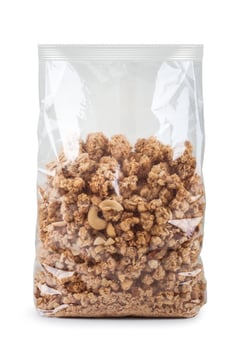
Moisture is often referred to as the food industry’s biggest adversary, with food manufacturers citing moisture regulation as one of their top challenges. From the manufacturing line all the way down to the grocery store shelves, a fine balance of moisture must be maintained to ensure critical components remain stable during a food product’s journey. If moisture content is too high, certain foodstuffs can develop mold; if moisture content is too low, the product might get stale or crust.
Whatever the case might be, it’s important that food manufacturers monitor and regulate moisture throughout the production process, or run the risk of having their products ruined. Thankfully, recent advances in moisture analysis tools have created several opportunities in the packaging and food sectors to maintain that balance beyond the production line – especially for convenience food products.
Ensuring Equilibrium Relative Humidity
Moisture analysis tools allow manufacturers to evaluate a product’s moisture content and ensure equilibrium relative humidity, or ERH, a state in which the humidity (or moisture) of a product is equal to that of its packaged environment. In every food product, there’s an upper limit to the amount of moisture a product can contain before it becomes unstable; by using these tools to determine the moisture content in the foods, it becomes far easier to maintain the appropriate level of humidity within a package and avoid spoilage.
Moisture analysis instrumentation provides an opportunity for packaging solutions to better meet the specific requirements of a wide variety of packaged food products, as the ideal ERH of each food will vary from product to product.
For example, when moisture levels dictate texture – as with cookies and cakes – it’s critical that the packaging is customized to meet a pre-determined amount of moisture in order to ensure the cake is moist every time.
Analyzing At All Points In The Process
Once packaging is in place to serve as a barrier between a food product and its environment, supply chain factors must also be taken into consideration. Food products – especially convenience foods – are transported and stored in environments with wide-ranging climate characteristics. Moisture levels on trucks and in warehouses further test the integrity of a food product’s composition and packaging, and neglecting to monitor these environmental factors that food products are subjected to along their supply chain journey can lower the product quality and shelf life.
The use of moisture analyzers allow for accurate temperature and humidity control within every step of the supply chain – from transportation to storage. Adding an extra quality control step within the supply chain can help extend an additional opportunity to mitigate losses associated with waste and lost product integrity due to harsh supply chain environmental factors. Kett moisture instruments are easy to use and highly portable, while also providing unparalleled accuracy and repeatability as well as instant, non-contact measurement in some cases.
What was once the food industry’s biggest adversary has become the industry’s greatest area of advance. Moisture regulation is a critical component within every aspect of a food product’s lifespan, and today’s cutting-edge moisture analysis tools are advancing the food and packaging sectors’ ability to measure and control humidity.
